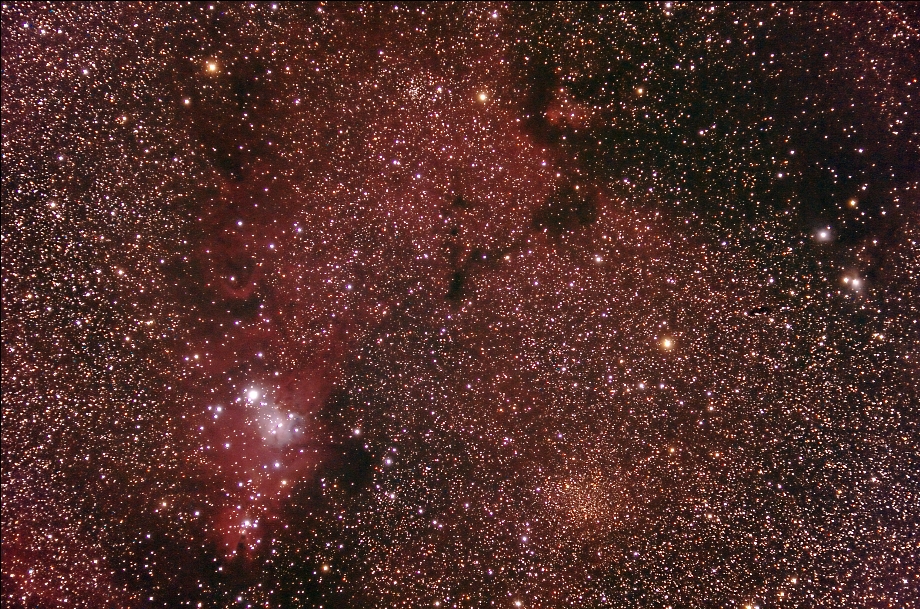 |
Christmas Tree Cluster Region in Monoceros
 |
Copyright 2005 Hap Griffin
In this very dense region of the winter Milky Way lies an area depicting a whole catalog of deep space object types. Starting at the far lower left we see the Christmas Tree Cluster, NGC 2264, an open star cluster the brightest of which is 5th magnitude S Monoceros which forms the base of an upside down Christmas tree (you really have to look to see it). The top of the tree (remember, it's upside down in this shot) is the 7th magnitude star V427 Monoceros. Both of these stars are variable stars...that is they vary in brightness periodically. Most variable stars have a regular cycle, but both of these stars are irregular variables in that their brightness variations are unpredictable and explosive at times. Just below the Christmas Tree Cluster is the Cone Nebula...a portion of the complex dark dust clouds all across this area. Above the Christmas Tree Cluster is the Foxfur Nebula which lies between us and the more distant stars behind it Most of the objects in this part of the photograph are at a distance of 2200 light-years.
Extending into the photograph from the upper right is another dark nebula, a region of dust that blocks the light of the stars beyond. A small open star cluster, NGC 2259, lies at the upper center. At the right side of the photograph are two blue nebulae, the upper of which is NGC 2247. The obvious dense star cluster near the center bottom is unidentified...it does not show up in my references for this area.
Registar reports
31,485 stars in this photograph.
Date/Location:
January 9, 2005 Griffin/Hunter
Observatory Bethune, SC
Instrument: Canon 300D Digital SLR (modified) through Orion ED80 w/ Meade
.63 Focal Reducer piggybacked on LX-200
Focal Ratio: Approx. f4.5
Guiding: Auto through LX-200 w/ SBIG ST-237
Conditions: Visually clear
Weather: 45 deg. F
Exposure: 70 minutes total @ ISO 800 (14 x 5 min exposures) calibrated with flat frame
and Master Dark frame (median combine of 9 darks)
Filters: Baader UV/IR Block
Processing: Focused and captured with DSLRFocus.
RAW to TIFF conversion, frame calibrations, Digital Development,
Adaptive Richardson_Lucy deconvolution, scaling and JPEG conversion with ImagesPlus.
Frame alignment in Registar. Noise reduction with
NeatImage.